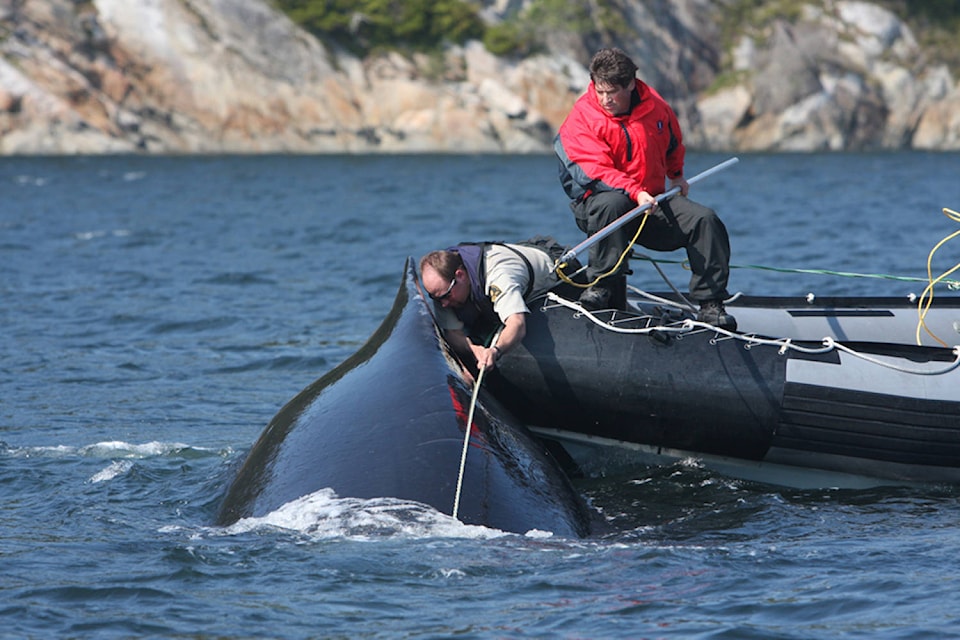Not unlike a physician delivering human babies, Paul Cottrell gives life for a living — with one major difference.
In his case, he helps to deliver some of the world’s largest animals from human fishing nets and other entanglements.
As the pacific marine mammal co-ordinator for British Columbia in the federal department of fisheries and oceans, Paul Cottrell belongs to a small group of scientists around the world, who offer their expertise in whale disentanglement to the International Whaling Commission.
As Cottrell says, it is dangerous work for all concerned parties. “It involves small boat handling, ropes under high tension, sharp blades and panicked wild animals,” the commission notes matter-of-factly on its website. Little more than a year ago, Joe Howlett, a volunteer whale rescuer, died in the Gulf of St. Lawrence, while trying to rescue a whale from a Department of Fisheries and Oceans boat.
But it is also deeply rewarding work that prevents another creature from suffering a slow, agonizing death.
RELATED: Orca’s ‘tour of grief’ over after carrying dead calf around for nearly 3 weeks
“There is no feeling like making that last cut … and seeing the animal breech,” he said. “It’s the best part of my job.”
When Cottrell joined the department, he first worked with seals and sea lions. In 2009, he performed his first whale rescue, followed by 34 more — humpbacks, greys and killer whales. No two have been the same, as each poses unique challenges, he said.
But if the circumstances differ, each rescued animal is another small piece in the larger effort to preserve animals once hunted to the brink of extinction, and now facing another host of human-made threats to their long-term survival.
They include climate change, shrinking food stocks thanks to over-fishing, the disturbing effects of ship sonars on internal navigation of cetaceans, fishing nets, and the mere physical presence of human vessels on the world’s oceans.
“Every animal is crucial to [cetacean] populations,” he said. To this end, he is encouraging boaters to call 1-800-465-4336 if they spot whales in distress.
The waters surrounding Greater Victoria underscore this point. As of September 2018, the region is home to 74 southern resident killer whales, and recent developments suggest, the animals spread over three pods are not doing well.
Recent aerial images of one adult male – K25 – show him ailing based on his thinning body, according to the U.S. National Oceanic Atmospheric Administration.
RELATED: UPDATED: Sick orca J50 declared dead by 1 group while scientists remain hopeful
This news comes after officials had declared J50 — a four-year-old female orca — presumed dead following failed efforts to treat her. Earlier, J35 lost a calf soon after its birth in late July. The grieving animal, however, carried her dead calf on her head for more than two weeks before letting it go.
But there is also good news. K-27 — K-25’s sister — is heavily pregnant, as is at least one whale in the other two pods, J and L.
In fact, the three pods recently came together to form a super-pod, a non-scientific term used to describe such a gathering.
Cottrell said he’s not sure why 40 of the 74 animals gathered in one spot. “It’s difficult to answer because it’s not predictive,” he said.
At the risk of speculation, perhaps they were throwing a baby shower.
